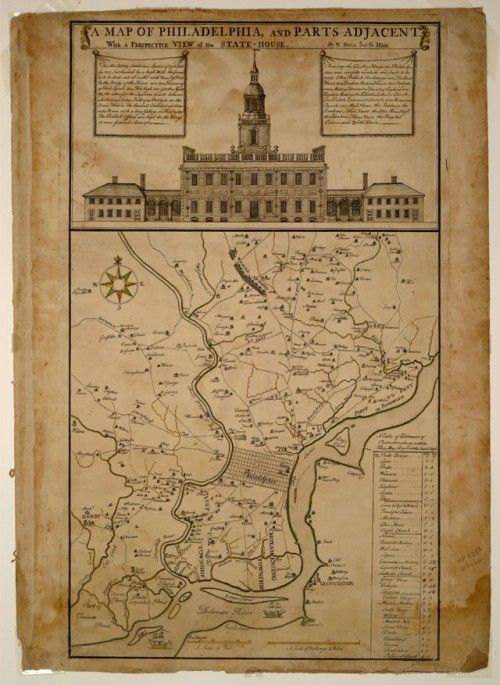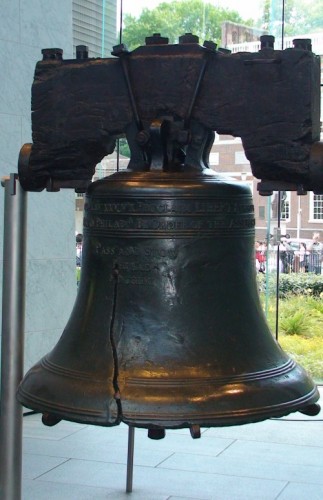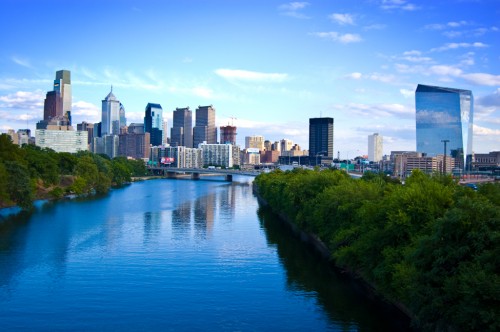Not many people realize that Philadelphia was the capitol of the United States until Washington, D.C. was established in December, 1800. It housed both Continental Congresses and the Constitutional Congress, and the both the Declaration of Independence and the Constitution were written there.
Planning to visit Philadelphia? Make the most of your time in this great historical city.
Philadelphia’s Early History: New Sweden
Before any white man had set foot on the land we now know as Philadelphia, Pennsylvania, there were the Lenape Indians. The Lenape lived near the border of Pennsylvania in what is now Delaware.
The first white men to set foot on this ground were Swedish. They arrived in the 1600’s and occupied the Delaware River, some of today’s Philadelphia, and Maryland and named it New Sweden, after the New Sweden Company, formed by Dutch, Swiss, and German entrepreneurs in order to trade for furs and tobacco with the native Americans.
In 1638, they built their first fort along the Delaware river: Fort Christina, named after Sweden’s 12-year-old queen. 9 years later they built Fort Nya Korsholm, which would become Philadelphia.

This map, drawn in 1752, shows Philadelphia sitting west of the Delaware River (lower right) and on both sides of the Schuylkill River (running through center of map) where it is today.
A little over a decade later, the Dutch army took control of the colony after a Swedish governor attempted to expel Dutch settlers from the Delaware valley.
The Swedes were not forced to leave, however, and the colony continued as New Sweden until 1681.
William Penn Founds Pennsylvania and “The City of Brotherly Love.”
In 1681, William Penn was granted a charter by the English government for all of Pennsylvania, including the Delaware valley. He sent a delegate to arrange the transition of New Sweden from Dutch to British hands.
The following year, Penn renamed a portion of new Sweden as Philadelphia and required all its residents to obtain English citizenship.
Philadelphia is Greek for “brotherly love.” Penn was a Quaker, and he did not want a repeat of the persecution that Quakers had received in England. Thus, with the permission of Charles II of England, his royal charter ensured that there would be freedom of religion throughout Pennsylvania. “The City of Brotherly Love” was a promise to maintain that freedom.

The Liberty Bell, Philadelphia’s most well known historical symbol
Philadelphia Lifestyle in the 1700’s
Life in the colonies could be difficult. There were houses to build, fields to farm, and bitterly cold winters to endure. Children did not have much playtime then, and they had to work on becoming adults at a young age. It was typical to be married and a full-fledged adult member of society at 16.
The Ultimate “Must Read” for Teenagers
Brent and Alex Harris’ Do Hard Things provides a brilliant and inspiring argument that teenagers ought to be adult trainees even today. They have a blog called “The Rebelution,” that they call “a teenage rebellion against low expectations.”
If you are a teenager or a parent of a teenager, then reading that book is more important than your next meal.
The Indians that lived nearby would watch the strange people as they went about their work.
Even settlements built outside the Philadelphia border line were considered part of the city. Philadelphia became known by its sections, such as Penn District and Spring Garden to the north and West Philadelphia to the west. Many such locations made Philadelphia one of the most prosperous cities among the early colonists.
Philadelphia’s Financial Situation Before the Revolutionary War
Queen Anne’s War,fought in between 1702 and 1713, cut off trade to the city, causing the city much financial pain. The war was closely suffered by a depression in the 1720’s, which caused Philly’s population to begin to dwindle.
In her earlier years, “The City of Brotherly Love” had been a major export and trade center. So in order to help not only Philadelphia but themselves, England and some other European countries helped them build their farmlands back up.
The Bloody Election
Also known as the “Philadelphia Election Riot of 1742,” the Bloody Election occurred when there was conflict between the Quakers, who had been the primary citizens of the Delaware Valley for decades, and the “Proprietary” faction, whose main concern was business.
The Quakers were most concerned about freedom, peace between citizens and with the Indians, and low taxes.
The Quakers were joined by immigrant German farmers, who were very concerned about their own rights.
On election day, Quakers and the Germans came early and crowded the courthouse steps, attempting to make it difficult for the opposition to cast their votes. The Proprietary party, as it turns out, had even less ethical tactics in mind.
After magistrates cleared the steps and had the separate parties line up, sailors from business vessels attacked the Quakers and Germans with clubs. The newspapers would report that it was a miracle that no one was killed.
Quakers take a vow of non-violence, but German farmers do not. They got whatever wood they could from the courthouse and fought back, driving the sailors back to their ships.
The result was a resounding win for the Quaker faction because the citizens were disgusted by the violence.
Political and religious tensions began to grow when more religions were introduced such as Quakers, Pietists, Anglicans, and Catholics. Religious controversy led to riots in the 1740’s as a result of this. In October of ’42, the riots climaxed in an event known as the “Bloody Election” or the “Philadelphia Election Riot of 1742.”
Pickpockets and criminals prospered during the unrest. Nonetheless, by the mid 1700s’ Philadelphia surpassed even Boston in population. Few fled the city despite its problems.
By the 1750’s, Philadelphia had a permanent trading center, which Benjamin Franklin, who had become a leading citizen in the city, helped improve. Benjamin Franklin also built a hospital for the poor, established the first public library, started the first American police force. He also started a fire department called the Union Fire Company which is still in operation today.
Thus, Philadelphia was a thriving, central city when the War for Independence began.
Philadelphia During the Revolutionary War
Philadelphia was the headquarters, if not the official capitol, of the colonies during the American Revolutionary War. This historical city hosted the First Continental Congress, which was held in Carpenter’s Hall, before the war, and the Second Continental Congress, which signed the Declaration of Independence.
Thus it was that General William Howe was thrilled to outmaneuver George Washington and march into Philadelphia without opposition on September 26, 1777.
Tense conflict ensued, however, because American patriots stripped the city of supplies before they arrived. Even the Liberty Bell was carried out to prevent the British from making bullets from it!
It took the British two months to defeat American forts along the Delaware River and begin to bring in supplies. By then, their skirmishes with the continental army and the damages that resulted had angered the populace. Worse, General Burgoyne’s surrender at Saratoga in October had inspired French trust in the Americans and brought them into the war.
By spring of 1778, General Howe, fearing being cut off by French ships at the mouth of the Delaware, simply fled Philadelphia for New York, returning it to the Americans for good.
Philadelphia had been taken by the British and lost without a shot being fired!

A beautiful photo of modern Philadelphia’s skyline by Ed Yakovich | Photo in public domain by photographer’s permission
Capital of the United States Until December, 1800
After the war, Philadelphia hosted the Constitutional Congress, where the U.S. Constitution was composed and John Hancock set his signature to it.
Once the Constitution was ratified and George Washington became president, he spent the first year of his tenure in New York City. Soon, however, the Residence Act made Philadelphia the temporary, official capitol of the United States for 10 years beginning in December, 1790. This was to allow President Washington time to build a new capitol built along the Potomac River, which, of course, became Washington, D.C.
To this day, Philadelphia remains the largest city in Pennsylvania and the 6th most populous city in the United States.


